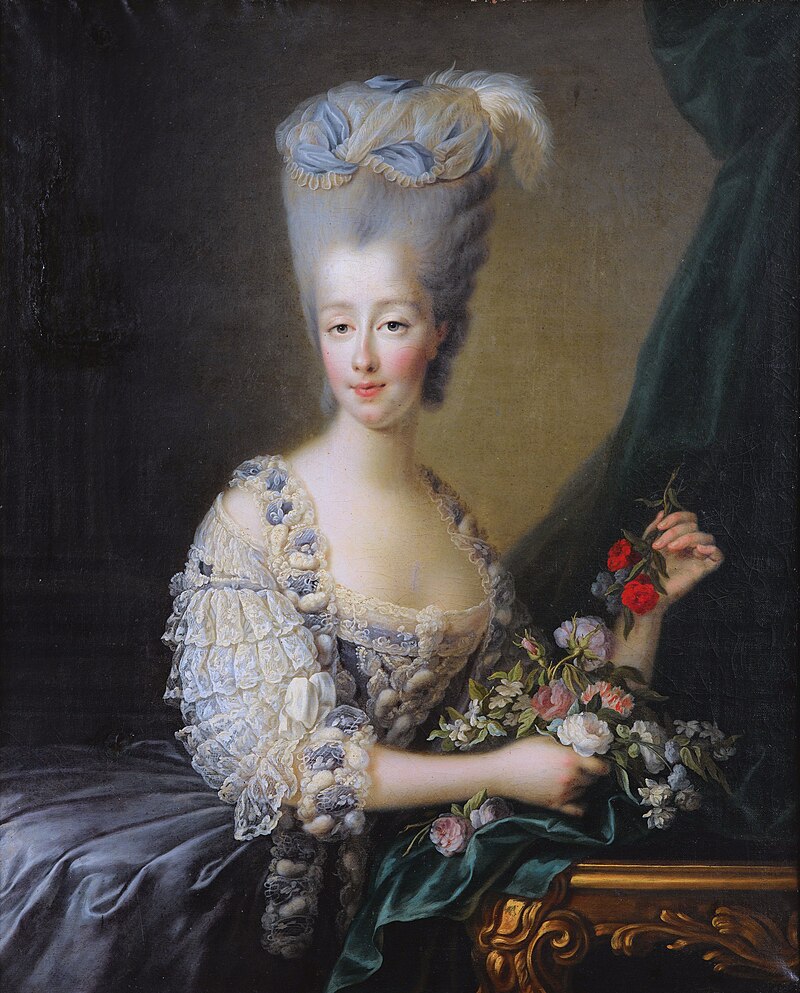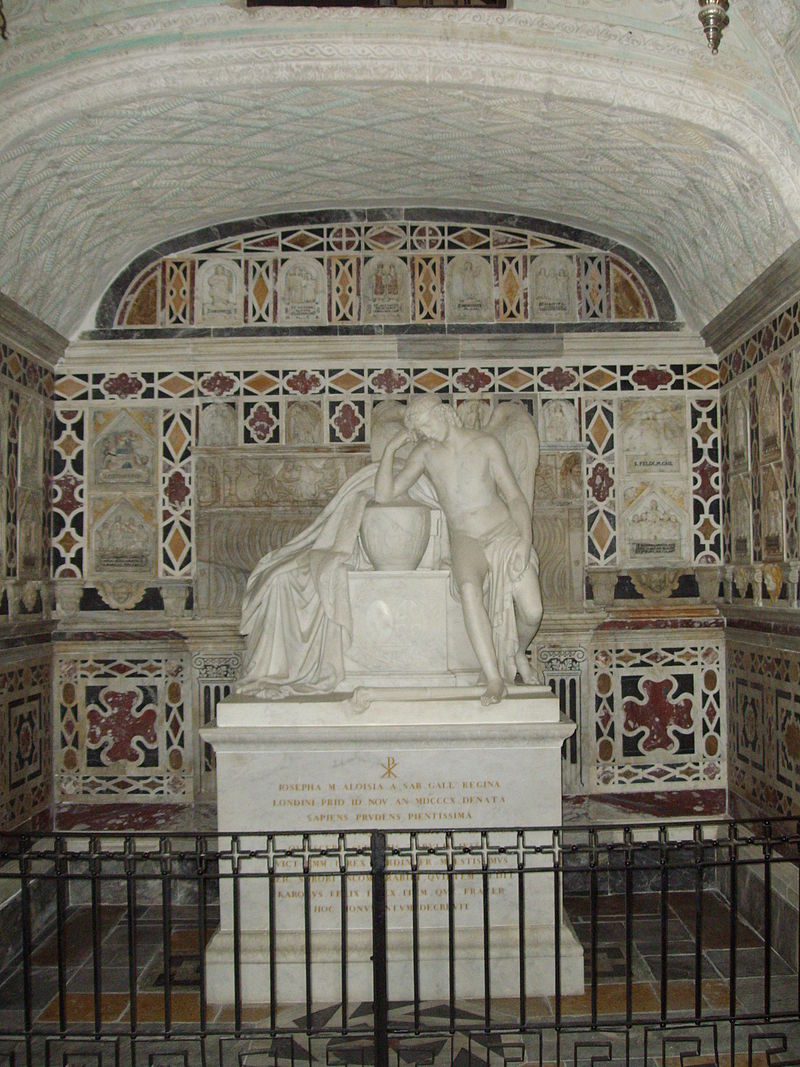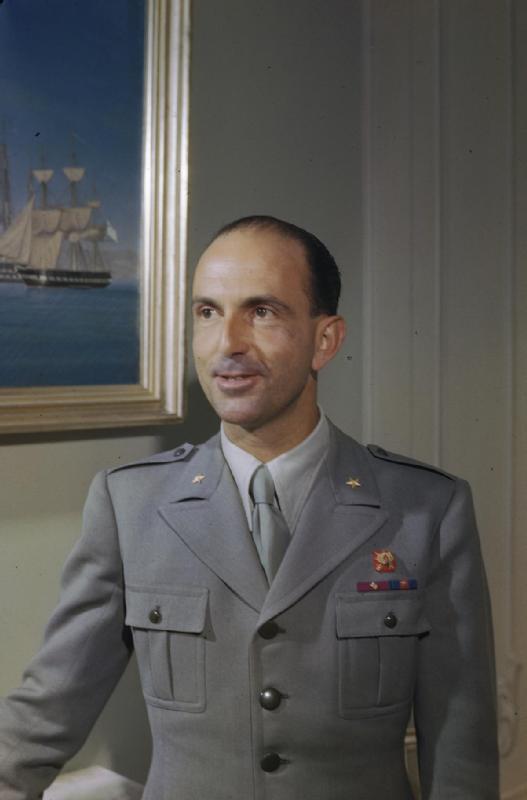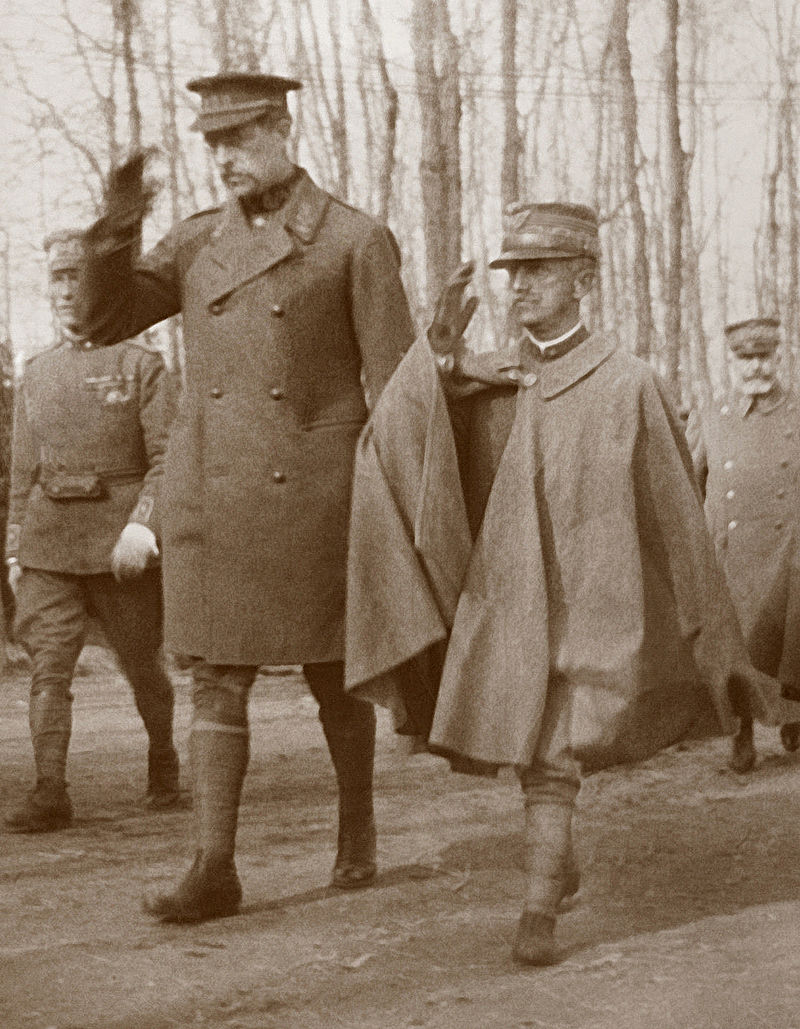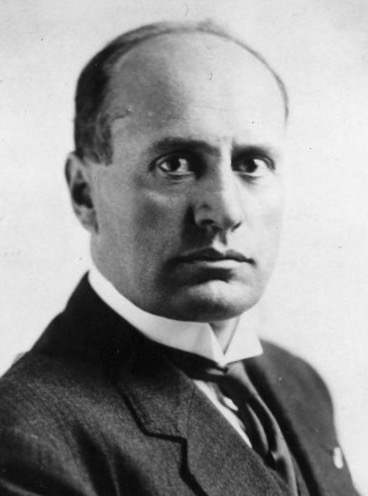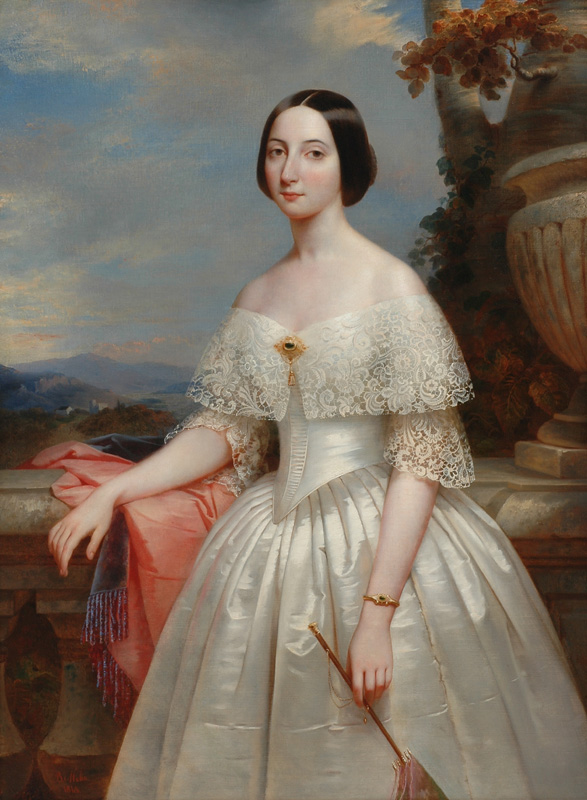by Susan Flantzer © Unofficial Royalty 2016

Zita of Bourbon-Parma, Empress of Austria; Credit – Wikipedia
Princess Zita of Bourbon-Parma (Zita Maria delle Grazie Adelgonda Micaela Raffaela Gabriella Giuseppina Antonia Luisa Agnese) was born on May 9, 1892, at the Villa Pianore in Lucca, Tuscany (Italy). She was the daughter of the deposed Robert I, Duke of Parma and his second wife, Maria Antonia of Portugal, daughter of the deposed King Miguel I of Portugal and Adelaide of Löwenstein-Wertheim-Rosenberg. Duke Robert I of Parma had a total of 24 children, 12 children with his first wife Princess Maria Pia of Bourbon-Two Sicilies and 12 children with his second wife, Zita’s mother. Zita was the 17th of her father’s 24 children. Six of the children from Duke Robert’s first marriage were mentally disabled. Zita’s half-sister Marie Louise married King Ferdinand I of Bulgaria. Zita’s full brother Felix married Grand Duchess Charlotte of Luxembourg and the present Grand Ducal family descends from them. Another full brother René married Princess Margrethe of Denmark, daughter of Prince Valdemar of Denmark, youngest son of King Christian IX of Denmark. René and Margrethe’s daughter Anne married King Michael I of Romania. Four of Zita’s full sisters became nuns.
Zita had eleven siblings:
- Maria della Neve Adelaide (1885 – 1959), a Benedictine nun at the Monastery of Solesmes, France
- Sixtus (1886 – 1934), married Hedwige de La Rochefoucauld, had issue
- Xavier, Duke of Parma (1889 – 1977), married Madeleine de Bourbon-Busset, had issue, the Carlist claimants to the Spanish throne descend through this line
- Francesca (1890 – 1978), Benedictine nun at the Monastery of Solesmes, France
- Felix (1893 – 1970), married Grand Duchess Charlotte of Luxembourg, had issue
- René (1894 – 1962), married Princess Margrethe of Denmark, had issue including Anne who married King Michael I of Romania
- Maria Antonia (1895 – 1937), a Benedictine nun at the Monastery of Solesmes, France
- Isabella (1898 – 1984), nun
- Luigi (1899 – 1967), married Princess Maria Francesca of Savoy, had issue
- Henrietta Anna (1903 – 1987), unmarried, was deaf
- Gaetano (1905 – 1958), married and divorced Princess Margarete of Thurn and Taxis, had issue
From her father’s first marriage to Maria Pia of Bourbon-Two Sicilies, Zita had twelve half-siblings. Six of the siblings were mentally disabled and two died in infancy. The twelfth child was stillborn and Maria Pia died in childbirth at the age of 33.
- Marie Louise (1870 – 1899), married Tsar Ferdinand I of Bulgaria, had issue including Tsar Boris I of Bulgaria
- Ferdinando (born and died 1871) died in infancy
- Luisa Maria (1872 – 1943), unmarried, mentally disabled
- Enrico, Duke of Parma (1873 – 1939), unmarried, mentally disabled, Titular Duke of Parma 1907-1939, his brother Elias took up the role as regent and head of the family
- Maria Immacolata (1874 – 1914), unmarried, mentally disabled
- Giuseppe, Duke of Parma (1875 – 1950), unmarried, mentally disabled, Titular Duke of Parma 1939-1950, his brother Elias continued the role as regent and head of the family
- Maria Teresa (1876 – 1959), unmarried, mentally disabled
- Maria Pia (1877 – 1915), unmarried, mentally disabled
- Beatrice (1879 – 1946), married Pietro Lucchesi-Palli, had issue
- Elias, Duke of Parma (1880- 1959), married Archduchess Maria Anna of Austria, had issue; Head of the Ducal Family of Parma (1950–1959)
- Maria Anastasia (born and died 1881), died in infancy
- Stillborn child (September 22, 1882), Maria Pia died in childbirth

The family of Robert I, Duke of Parma in 1906, From left to right, first row: Immaculata, Antonia, Isabella, Duke Robert, Henrietta, Luigi, Gaetano, Duchess Maria Antonia, Renato, Zita (sitting on the far right). From left to right, second row: Francesca, Pia, Luisa, Adelaide, Teresa, Joseph, Xavier, Henry, Sixtus, Felix; Photo Credit – Wikipedia
Despite losing his throne due to the unification of Italy, Zita’s father Robert of Bourbon-Parma Robert was considerably wealthy, traveled in a private train, and owned castles at Schwarzau am Steinfeld near Vienna and Villa Pianore in northwest Italy, and the magnificent Château de Chambord in France. Zita grew up in a multi-language home. French was the main language spoken at home, but Italian and English were also spoken. Zita’s mother spoke Portuguese and German because her father was Portuguese and her mother was German. Zita’s German was perfected when she attended the school for aristocratic girls at the Salesian Sisters convent in Zangberg, Bavaria (now in Germany) from 1903 – 1908. The convent school followed the Bavaria Gymnasium curriculum, and Zita studied math, geography, history, natural history, and music. Zita then ended her formal education at Benedictine Abbey of St. Cecilia on the Isle of Wight in England where Zita’s grandmother Adelaide of Löwenstein-Wertheim-Rosenberg was the prioress. Here Zita studied theology and philosophy and perfected her English. She was also introduced to Gregorian chant and began playing the organ.

A young Zita; Credit – Wikipedia
Zita’s maternal aunt Maria Teresa of Portugal had married a younger brother of Emperor Franz Joseph I of Austria. Because of this, Zita and her future husband, then Archduke Karl of Austria, met as children. Karl was under pressure to marry and produce an heir because his uncle and the current heir, Archduke Franz Ferdinand, had married morganatically and children from that marriage were excluded from the succession. Zita and Karl married on October 21, 1911, at Schwarzau Castle in Schwarzau am Steinfeld, Austria. Emperor Franz Joseph I of Austria and his heir Archduke Franz Ferdinand were among the prominent guests at the wedding.
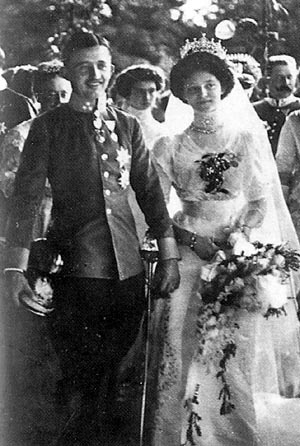
Zita and Karl on their wedding day; Credit – Wikipedia
Both Zita and Karl were devout Catholics and on the day after their wedding, Karl told Zita, “Now, we must help each other to get to Heaven.” Zita gave birth to eight children in less than 10 years. When Karl died in 1922, Zita was only 29 and pregnant with her eighth child. She never married again and wore black for the 67 years of her widowhood.
- Crown Prince Otto (1912 – 2011), married Regina of Saxe-Meiningen, had seven children
- Archduchess Adelheid (1914 – 1971), unmarried
- Archduke Robert (1915 – 1996), married Margherita of Savoy-Aosta, had five children
- Archduke Felix (1916 – 2011), married Anna-Eugénie of Arenberg, seven children
- Archduke Karl Ludwig (1918 – 2007), married, Yolanda of Ligne, had four children
- Archduke Rudolf (1919 – 2010), married (1) Countess Xenia Tschernyschev-Besobrasoff, had four children; (2) Anna Gabriele of Wrede, had one child
- Archduchess Charlotte (1921 – 1989), married George, Duke of Mecklenburg, no issue
- Archduchess Elisabeth (1922 – 1993), married Prince Heinrich Karl Vincenz of Liechtenstein, had five children

Zita, Karl, and their children in 1921; Photo Credit – Wikipedia
The assassination of Archduke Franz Ferdinand on June 28, 1914, in Sarajevo made Karl the heir to the Austrian throne. Emperor Franz Joseph was almost 84 years old, and Karl and Zita would become Emperor and Empress decades earlier than previously thought. The two were now under constant public attention. During the early days of World War I, Karl was often away with the army. For security reasons, Zita and her children stayed with Emperor Franz Joseph at Schönbrunn Palace in Vienna. During this time the Emperor expressed his deep pessimism about the monarchy’s future to Zita. Emperor Franz Joseph died on November 21, 1916, and 29-year-old Karl was now Emperor of Austria, King of Hungary and Croatia, and King of Bohemia.

Funeral Procession for Emperor Franz Joseph, in front: Zita and Karl with their oldest son Otto; Credit – Wikipedia
Austria was on the losing side of World War I. At the end of the war, the armistice required that the Austrian-Hungarian Empire allow for autonomy and self-determination of government by its various ethnic populations. The various areas of the Austrian-Hungarian Empire proclaimed independence, and by October 1918 there was not much left of the empire. On November 11, 1918, the same day as the armistice ending World War I, Karl issued a proclamation in which he recognized the rights of the people of the empire to determine their form of government and released his government officials from their loyalty to him. Karl did not use the term “abdicate” in his proclamation and would never admit that he abdicated.
On March 23, 1919, Karl and his family left for Switzerland. On April 3, 1919, the Austrian Parliament passed the Habsburg Law that forbade Karl or his wife Zita from returning to Austria. The law also prevented other Habsburgs from returning to Austria unless they renounced all intentions of claiming the throne and accepted the condition of living as ordinary citizens. On the same day, all noble titles were abolished. In 1921, Karl returned to Hungary twice, attempting to regain the throne of Hungary. After the second attempt, the Council of Allied Powers decided to exile Karl and his family to the Portuguese island of Madeira.
In March of 1922, Karl caught a cold that developed into bronchitis and further developed into pneumonia. After suffering two heart attacks and respiratory failure, Karl died on April 1, 1922, at the age of 34. Due to the Habsburg Law, Karl could not be buried in the Imperial Crypt in Vienna. He was buried at the Church of Our Lady of Monte on the island of Madeira in Portugal. His heart was buried at the Muri Abbey, a Benedictine monastery dedicated to Saint Martin of Tours, near Basel, Switzerland. When Karl’s wife Zita died in 1989, she requested that her heart be buried with her husband’s. Two of their sons, Rudolf and Felix, are also buried at Muri Abbey. On October 3, 2004, Pope John Paul II beatified Karl and he is known as Blessed Karl of Austria. Beatification is the third of four steps toward sainthood in the Roman Catholic Church.

Many churches in Austria have portraits of Blessed Karl of Austria. This altar dedicated to him is in the Augustinerkirche in Vienna, the parish church of the Austrian Imperial Family; Photo Credit – Susan Flantzer
The years following Karl’s death were difficult financially and Zita and her family moved often. They lived in Spain, Belgium, the United States (two of Zita’s sons served in the US Army during World War II), and Canada. In 1952, Zita moved back to Europe, living in Luxembourg and Switzerland. One of her daughters died in Austria in 1971 and Zita could not attend the funeral. The restrictions on the Habsburgs entering Austria had been rescinded, but only for those Habsburgs born after April 10, 1919. In 1982, the restrictions were eased and after 63 years Zita could return to Austria for visits. Zita had large family birthday celebrations for her 90th and 95th birthdays. Her health had been failing since her 90th birthday and the former Empress Zita died on March 14, 1989, at her home in Zizers, Switzerland at the age of 96.

Zita with eight of her children in 1962, Standing in the back from left to right: Archdukes Carl Ludwig, Rudolf, and Robert, In the middle: Archduchesses Adelheid, Elisabeth, and Charlotte with Archduke Felix, In the front Empress Zita and Archduke Otto; Credit – Wikipedia
The government of Austria allowed the funeral to take place in Austria, provided that the Habsburg family paid the cost. The funeral mass was held at St. Stephen’s Cathedral in Vienna. At least 200,000 people had filed past her coffin during the two days it lay in state at the cathedral. Zita’s casket was borne to the Capuchin Church, where the Imperial Crypt is located, by the same coach she had walked behind during the funeral of Emperor Franz Joseph I in 1916. Over 200 Habsburg and Bourbon-Parma family members and 8,000 other guests attended the funeral on April 1, 1989. Zita was buried in the Crypt Chapel of the Imperial Crypt. Her husband’s remains are still interred at the Church of Our Lady of Monte on the island of Madeira in Portugal but their hearts were buried together at the Habsburg Crypt in the Loretto Chapel at the Muri Abbey near Basel, Switzerland.
On December 10, 2009, Yves Le Saux, Bishop of Le Mans, France, opened the diocesan process for the beatification of Zita. Zita spent several months each year in the diocese of Le Mans at St. Cecilia’s Abbey, Solesmes, where three of her sisters were nuns. With the opening of her process for beatification, Zita has been named Servant of God.

Tomb of Empress Zita; on the right is the tomb of her son Karl Ludwig; Photo Credit – Susan Flantzer
This article is the intellectual property of Unofficial Royalty and is NOT TO BE COPIED, EDITED, OR POSTED IN ANY FORM ON ANOTHER WEBSITE under any circumstances. It is permissible to use a link that directs to Unofficial Royalty.
Austria Resources at Unofficial Royalty
